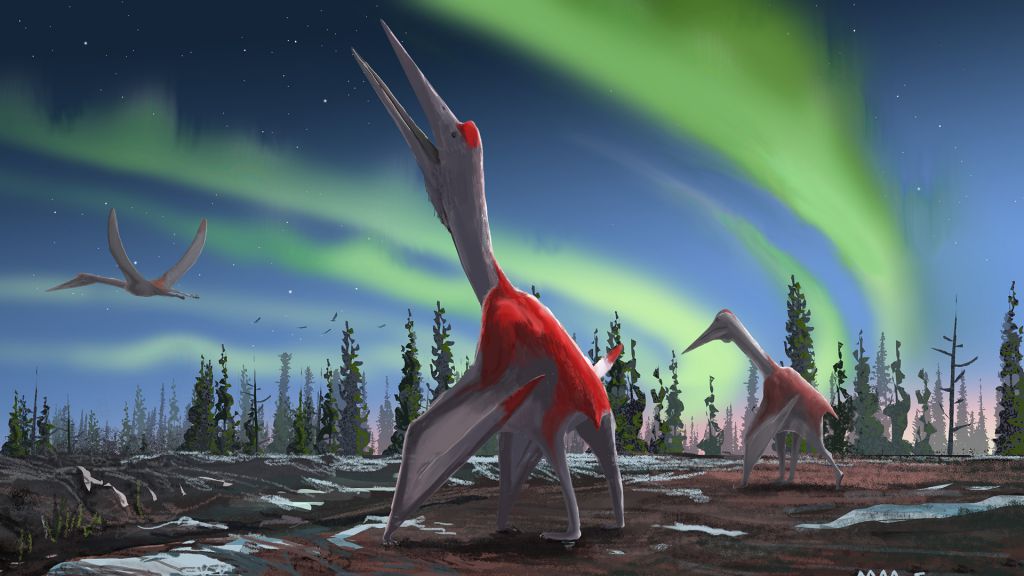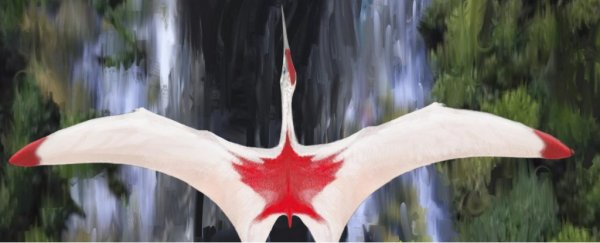During the age of the dinosaurs, the skies of North America were home to some of the largest flying animals the world has ever seen. New research now suggests there were at least two types of giant winged reptile living on the continent at the same time.
Re-analysing a jumble of pterosaur fossils found in Alberta, Canada, palaeontologists have identified a previously unknown species within the azhdarchid (aka giant pterosaur) group.
It's been named Cryodrakon boreas - "cold dragon of the north winds" - and in its day, roughly 77 million years ago, this reptile's beating wings would have cast an ominous shadow. With a wingspan up to 10 metres wide (32 feet), it would have been like a small airplane passing overhead.
Although the remains of this creature were first discovered 30 years ago, experts assumed they belonged to another monstrous azhdarchid species from the Cretaceous period, found in Texas and named Quetzalcoatlus. That animal had a wingspan up to 10.5 metres.
"This is a cool discovery, we knew this animal was here but now we can show it is different to other azhdarchids and so it gets a name," says David Hone from Queen Mary University of London.
 (David Maas)
(David Maas)
The main skeleton re-examined by researchers is thought to belong to a young Cryodrakon, with a wingspan of only five metres (16 feet). But among the other fossils found in Alberta's Dinosaur Provincial Park were some bones that likely came from more mature azhdarchids.
A giant neck bone, for instance, indicates a wingspan twice as long as the juvenile's, according to the authors.
Today, the fossil record for pterosaurs is scarce and very few azhdarchid remains have been found. So far, this mysterious group of giant flying reptiles is known to have existed on nearly every continent.
Their overly-large heads, balanced on the end of an extra long neck, usually led to a giraffe-like body with long legs and huge feet, not to mention their sprawling wings.
The general features tend to be the same, but among species there are distinct differences. Comparing Cryodrakon to all other known azhdarchids, the authors noticed a more robust neck and a unique extra hole in the Canadian pterosaur's vertebrae.
What's more, the reptile's humerus, the long bone of the upper arm, was also clearly different to the Texan Quetzalcoatlus. While Cryodrakon and Quetzalcoatlus probably had a very similar size and build, with similar flight muscles and characteristics, it appeared they were not actually the same species.
"It is great that we can identify Cryodrakon as being distinct to Quetzalcoatlus," says Hone, "as it means we have a better picture of the diversity and evolution of predatory pterosaurs in North America."
The authors estimate the remains in Canada were deposited between 76.7 and 74.3 million years ago, making it one of the oldest azhdarchids known from North America.
Compared to Quetzalcoatlus, which weighed around 250 kilograms (551 pounds), the team suggests that Cryodrakon was slightly heavier and relatively robust.
Vertebrate palaeontologist Michael Benton from the University of Bristol, who wasn't involved in the research, told Gizmodo he agreed that the new species was of a similar size to Quetzalcoatlus, "but was perhaps more sturdily built".
The research was published in the Journal of Vertebrate Paleontology.
